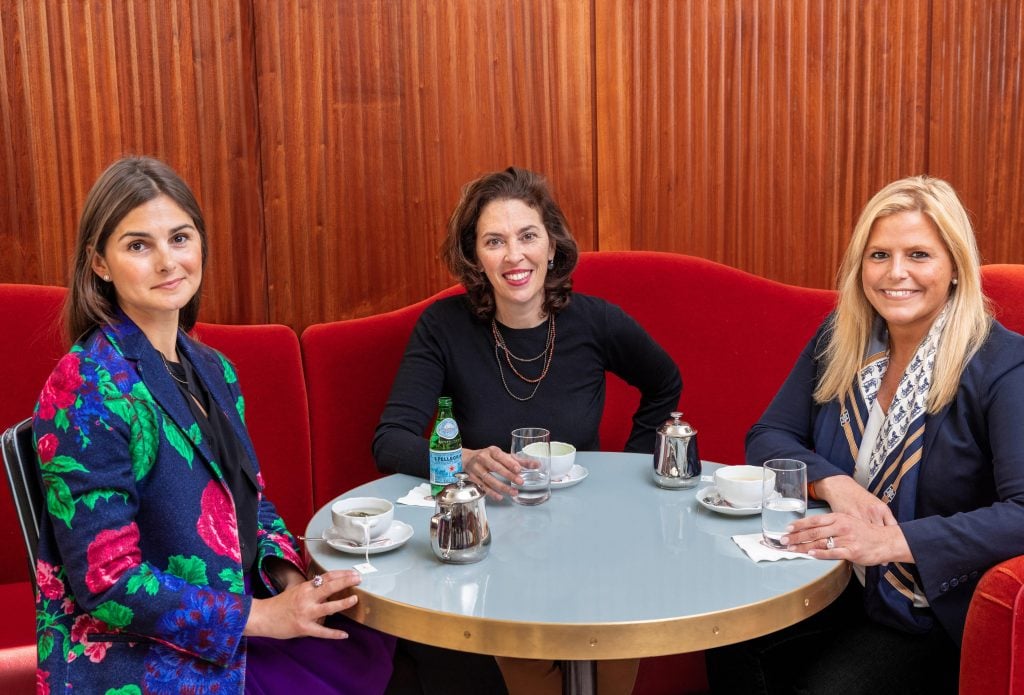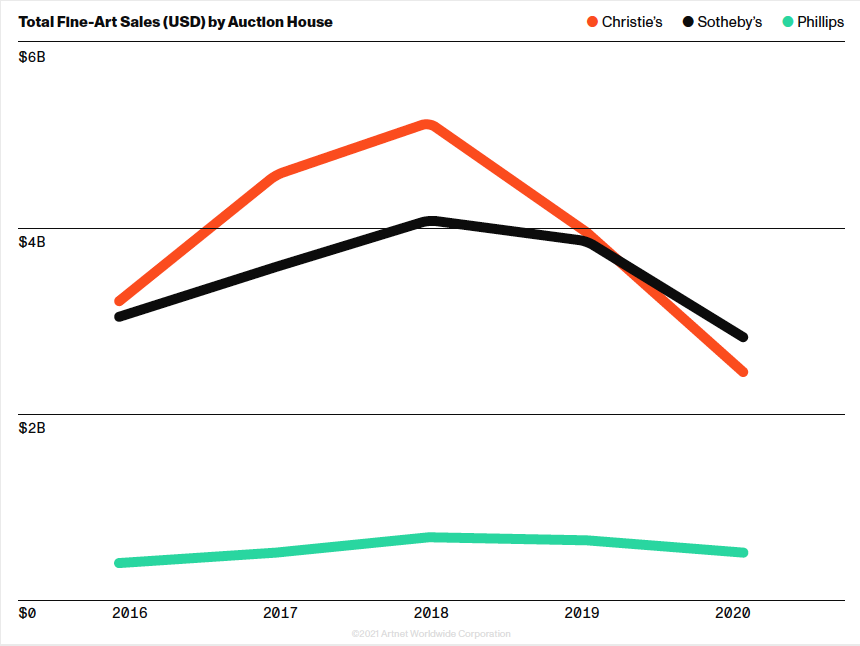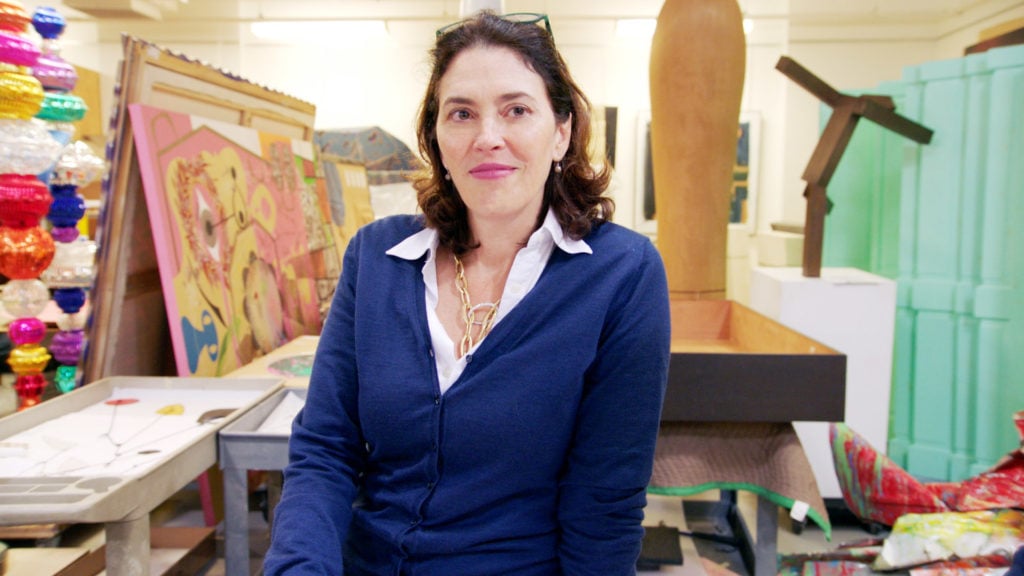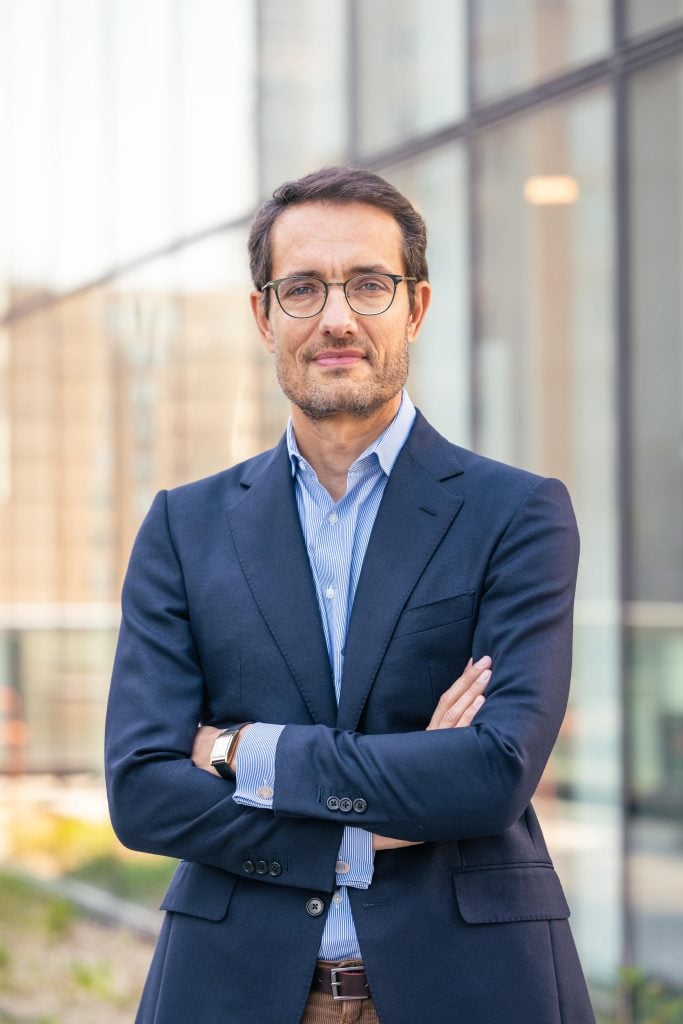Market
It’s Official: Amy Cappellazzo Is Done With Sotheby’s. And a New Generation Is Taking Her Place
The polarizing dealmaker will be replaced by two relative Sotheby's newbies.

The polarizing dealmaker will be replaced by two relative Sotheby's newbies.

Katya Kazakina

The Art Detective is a weekly column by Katya Kazakina for Artnet News Pro that lifts the curtain on what’s really going on in the art market.
Amy Cappellazzo’s future at Sotheby’s has been the subject of speculation in the art trade for months now. The star executive joined the auction house in January 2016 after it agreed to shell out $85 million for the advisory firm she co-founded. Her five-year contract ended in January. Both Sotheby’s and Cappellazzo have been mum on what happens next.
Today, the Art Detective can confirm that Cappellazzo, head of Sotheby’s global fine art division, is leaving.
She will stay until July to oversee the high-stakes sales of Impressionist, Modern, and contemporary art in May and June, including the $150 million collection of the late Texas philanthropist Anne Marion.
In her five and a half years at Sotheby’s, Cappellazzo accomplished much of what she was hired to do: improve profit margins, get ahead in contemporary art, and boost private sales. As an added bonus, Sotheby’s overtook Christie’s as the world’s top auction house for the first time since 2011 last year, with over $5 billion in aggregate sales compared to its rival’s $4.4 billion.

Total fine-art auction sales at the Big Three houses (private sales not included). Courtesy of Artnet Analytics and the Artnet Intelligence Report.
“I feel good that Sotheby’s is in a strong position,” Cappellazzo said in an interview this week, “and I can turn my attention to the next thing in my own life.”
What that “thing” is has yet to be determined, said Cappellazzo, 53. She plans to take a couple of months off during the summer and re-enter the business in September.
One of the art market’s most polarizing figures, Cappellazzo is criticized and admired in equal measure. While some in the trade still approach money as an outré subject, she is an unabashed dealmaker who has secured billionaire clients like Alice Walton, Norman Braman, and Dan Loeb. Even her detractors acknowledge her unparalleled ability to hold space in a male-dominated industry, stage an 11th-hour comeback, and create a perception of victory even in defeat.

Art Agency, Partners co-founder and Sotheby’s chairman and executive vice president Amy Cappellazzo in The Price of Everything. Image courtesy of HBO.
But retaining Cappellazzo would be costly, and Sotheby’s owner Patrick Drahi—once dubbed the “cost killer” in the French press—isn’t known for splurging on talent.
Sotheby’s C.E.O. Charles Stewart said Cappellazzo’s departure is not “about specific disagreement or falling out or purely economic discussions.” Instead, “this is really about what Amy wants to do with her life. You have to be all in about what you are doing and excited about it. Amy wants a different path, and I respect that.”
Who will fill Cappellazzo’s shoes? Rather than tapping a Sotheby’s veteran to take the post, Stewart chose two female executives who are newer to the firm: Impressionist and Modern art expert Brooke Lampley and trusts and estate attorney Mari-Claudia Jiménez. Both are being positioned as auction executives for a new generation.
Lampley, 41, who came to Sotheby’s in 2018 from Christie’s, will become chairman and worldwide head of sales for global fine art, overseeing strategy, auctions, and private transactions from Old Masters to contemporary.

Sotheby’s evening sale on October 28, 2020. Photo: Sotheby’s.
Known to work with clients including billionaires Ken Griffin and Stephen Schwarzman, she was the underbidder of the top two haystack paintings by Claude Monet to ever come to market, including his record $110.7 million canvas. She can routinely be spotted bidding on an eclectic range of objects, from Rembrandts to jewelry and design.
“All of the clients I work with collect great things,” Lampley said in an interview this week. “They don’t collect works of art from 1910 to 1920. I think there was a period of time when people collected that way. That is no longer.”
Jiménez, 45, a former partner at the law firm Herrick Feinstein LLP who joined Sotheby’s in 2016, will become chairman, managing director, and worldwide head of business development in the global fine art division.
Her remit will include regional art and Chinese works of art. Part of the strategy, she said, is to appeal to a wealthy audience outside the traditional art world. “That’s why we’ve expanded our horizons into sneakers and more pop-culture types of things, which appeal to different types of ultra-high-net-worth collectors,” Jiménez said.

Grégoire Billault. Photo by Julian Cassady for Sotheby’s.
Sotheby’s also elevated Gregoire Billault, 51, head of contemporary art in New York, to a global role in the department, with a focus on refining sales strategy across platforms. He’s been with the company for 20 years.
Cappellazzo’s departure comes at a high-stakes moment when auction houses are preparing to test post-pandemic demand. Getting top material has been one of the biggest challenges. Sotheby’s and Christie’s will have to battle for the biggest known art trove: a $700 million collection amassed by the octogenarian divorcees Linda and Harry Macklowe. Many expect the sale, which a court has ordered to be complete by the end of 2022, to be the highlight of the November auctions.
Cappellazzo’s exit also represents a broader shift away from the type of auction executive who seemed to wrest control of the market through sheer force of personality. She came of age professionally alongside two other larger-than-life auction figures, Tobias Meyer and Brett Gorvy. Both left the corporate world to become private art dealers.
Now, a new round of musical chairs is underway. Nathan Drahi, Patrick Drahi’s 26-year-old son, will take over Sotheby’s Asia following the retirement of chief executive Kevin Ching. There’s talk of other significant departures among specialists in Asia and the U.S. One of them is Liz Sterling, director of private sales and chairman of American art, who is leaving after the May sales to work privately with clients, including billionaire Ron Perelman.
“As always, when you lose someone of Amy’s caliber it’s a huge gap, but it’s also an opportunity for a lot of other people to jump in,” Billault said. “It’s a classic Sotheby’s cycle.”
Cappellazzo arrived at Sotheby’s in the midst of a similar shakeup. The company was emerging from a bruising proxy battle led by activist investor Loeb; Sotheby’s new CEO Tad Smith had just laid off scores of staffers. More rainmakers, including Alex Rotter, Cheyenne Westphal, and David Norman, would leave before things normalized.
The eye-popping sum Sotheby’s paid to bring on Cappellazzo and her two partners, Allan Schwartzman and Adam Chinn, sent shockwaves through the trade. There was the $50 million purchase price shared among the trio, plus a $35 million performance-related bonus. Already a controversial figure in the market, Cappellazzo became a lightning rod. It did not take long for her to consolidate her influence at the auction house (and she outlasted both of her partners who left for independent ventures).
Cappellazzo thrives in high-pressure situations. In 2017, she faced a major test when the collection of Emily and Jerry Spiegel came to market. It was a messy feud, with their two grown daughters pitching multimillion-dollar works to rival auction houses. The younger sibling ended up consigning just one work to Sotheby’s: an untitled skull painting by Jean-Michel Basquiat. Cappellazzo pushed Sotheby’s to dig into its coffers and guarantee the seller a price of $60 million. At the time, the artist’s auction record was $57 million.
“I knew we could make the painting an icon,” Cappellazzo recalled this week.
The risk paid off: The painting soared to $110.5 million, a record for an American artist at auction.
“It’s never about just winning the consignment,” Cappellazzo said of her philosophy. “You win when you sell the picture and you make money.”